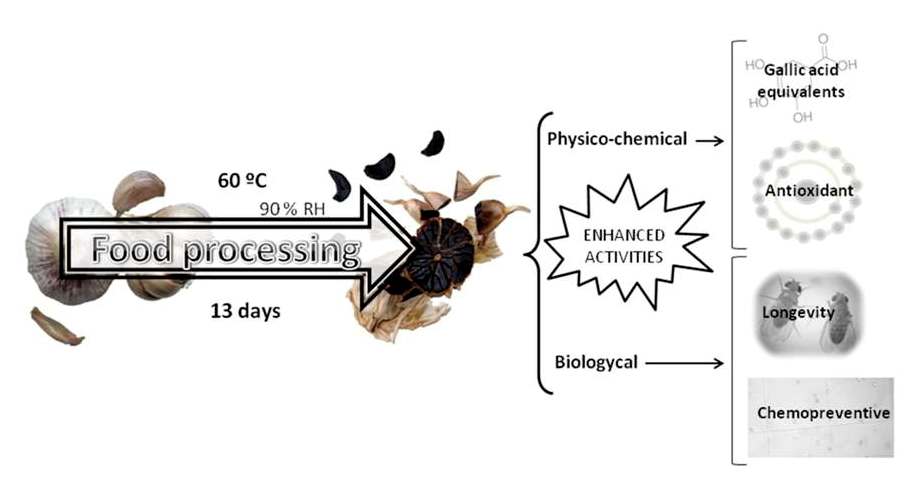Preprint
Article
Physico-Chemical Characterization and Biological Activities of Black and White Garlic: In Vivo and In Vitro Assays
Altmetrics
Downloads
842
Views
321
Comments
0
A peer-reviewed article of this preprint also exists.
Submitted:
11 May 2019
Posted:
14 May 2019
You are already at the latest version
Alerts
Abstract
White and three types of black garlic (13, 32 and 45 days of fermentation, named 0C1, 1C2 and 2C1 respectively) were selected in order to check possible differences in their nutraceutic potential. For this purpose, garlic were physico-chemically characterised, and both in vivo and in vitro assays were carried out. Black garlic showed higher polyphenol content and antioxidant capacity than white garlic. The biological studies have shown that only white garlic was not safe showing toxicity effect. Furthermore, none garlic exert protective effects against H2O2, except the 0C1 black garlic. Moreover, garlic was non-genotoxic with the exception of the highest concentration of white garlic. On the other hand, 0C1 was the most antigenotoxic substance. The in vivo longevity assays yielded significant extension of lifespan results in some concentrations of white and 0C1and 1C2 black garlic. The in vitro experiments showed that all studied garlic induced a decrease in leukaemia cells growth. However, none type of garlic was able to induce proapoptotic internucleosomal DNA fragmentation. Taking into account the physicochemical and biological data, black garlic could be considered as a potential functional food and used in preventive treatment of age-related diseases. In addition, our findings could be relevant for the black garlic processing agrifood companies as the economical and timing costs are significantly reduced to 13 days aging.

Keywords:
Subject: Biology and Life Sciences - Horticulture
Copyright: This open access article is published under a Creative Commons CC BY 4.0 license, which permit the free download, distribution, and reuse, provided that the author and preprint are cited in any reuse.
MDPI Initiatives
Important Links
© 2024 MDPI (Basel, Switzerland) unless otherwise stated







